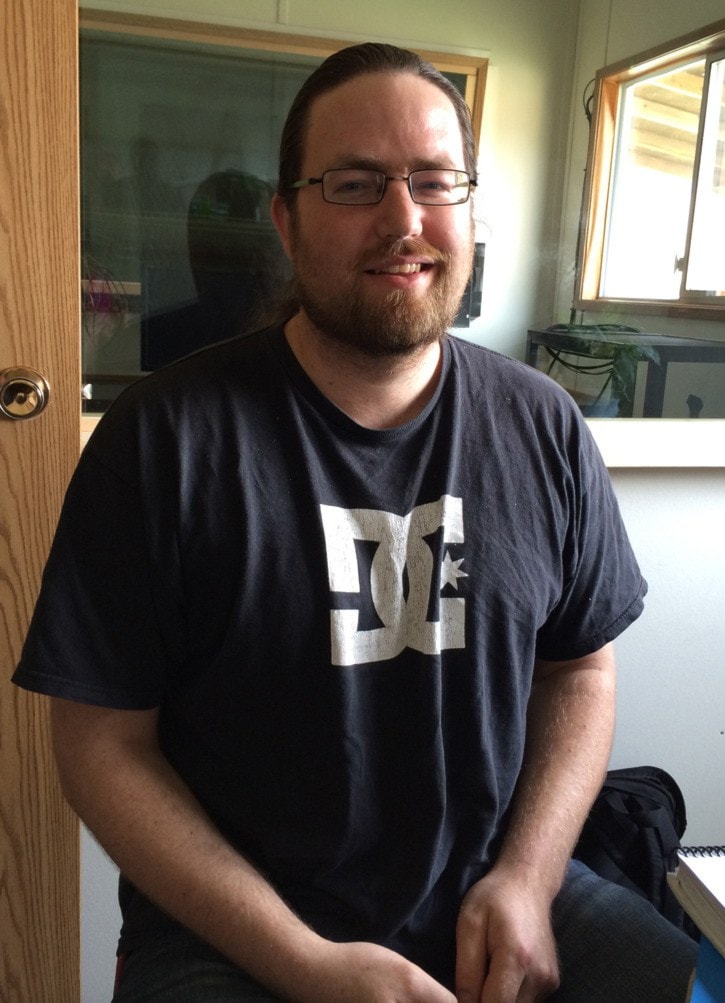It is something that most find hard to believe, but at one time or another, linguist Dale McCreery has been fluent in 14 dialects. Growing up in Hazelton, B.C., it was his grandmother that first recognized his keen interest in languages.
“My grandfather spoke Cree when he was young,” says McCreery, who is Métis. “But it was my grandmother who gave me my first Cree textbook and I started learning the language.”
Cree didn’t end up being the first language McCreery learned, however, it was Russian. Now 31 years old, McCreery spent a year teaching English in Moscow when he was 19. “It was an experience I will never regret,” he explains. “I loved it so much I went back for another year, and that’s when I became really fluent in the language.”
Russian, McCreery said, is a difficult language to learn. “There is a lot to learn before you can begin to make sense of the language,” he says. “It’s a lot like Nuxalk! But, once you get through that initial hurdle, it’s a lot of fun.”
Of the 14 or so languages he has learned, including French, Russian, Spanish, Michif (a traditional Metis dialect), Cree, Squuxs (South Tsimshian from Klemtu), Kinyarwanda (Rwanda), Swahili, Korean, Chinook, Tunisian Arabic, and Nuxalk, McCreery claims to be thoroughly fluent in about five languages at present.
“I am pretty sure that if I spent a month or so immersed back in the language, I would be fluent again,” he says. “But, it takes practice to keep up the fluency.”
Here in Bella Coola, McCreery is assisting NAALS with language revitalization. “I am focused on documenting the language with the goal of making it useful for language learners,” he explains. “I am also creating curriculum and educating others about how to teach a language.”
Documenting a language, he explains, is a lot different than simply learning it. “When you document a language you really dissect it,” he says. “It requires a full understanding of all of the ambiguities and idiosyncrasies that exist in the language. It’s a much bigger undertaking than simply learning to converse.”
McCreery has already documented the Squuxs language from Klemtu, spending over a year in the community with the only remaining speaker. She passed away not long after McCreery finished his work, having lived into her late 90s.
It is estimated that there are approximately 15 Nuxalk speakers left, many of them elders, and McCreery says the project has really helped the remaining speakers to sharpen their language skills and assisted others in becoming even more fluent. “When people get together and share the language it becomes sort of a snowball effect,” he explains. “It’s already in their memories, it just hasn’t been active for so long.”
Despite the fact that Nuxalk isn’t widely spoken today, McCreery says he can still glean valuable information from listening to Nuxalk people speak, even if they have limited knowledge of the language. “They are speaking English but they are really speaking Nuxalk,” he says. “They are using English to express Nuxalk culture; the way Nuxalkmc people speak English gives me clues to the Nuxalk language.”
Nuxalk, McCreery explained, is a fun language to speak because it is more ‘fluid.’ “Words in Nuxalk are more flexible and ambiguous, not fixed like in English,” he says. “It’s more interesting because the context matters more than the particular word. It’s a language that lends itself well to humour; you can really manipulate it to convey multiple meanings.”
Learning a new language can seem like an insurmountable task, something McCreery fully acknowledges. But, he says, it is not out of reach. “A lot of it is about forming relationships with people,” he says. “There is also the aspect of forming a relationship with the language and really being able to focus on it.”
And once you have mastered your first language, McCreery says, it becomes easier to learn more. Now, he says, he can spend an hour with someone and figure out the grammar of a new language. “You have the confidence in yourself that you can do it,” he says. “The mind learns how to pick up the patterns more quickly.”
For new language learners McCreery has some advice: love what you are doing and be patient. “They say that love is a choice,” he explains. “Choose to love what you are doing and it’s much easier.”
McCreery says in takes approximately 2,000 – 3,000 hours to learn a language, with lots of ups and downs. “Maintaining motivation is the biggest challenge, even for experienced learners,” he says. “You will be down many, many times but it’s part of the process. You just have to keep trying.”
